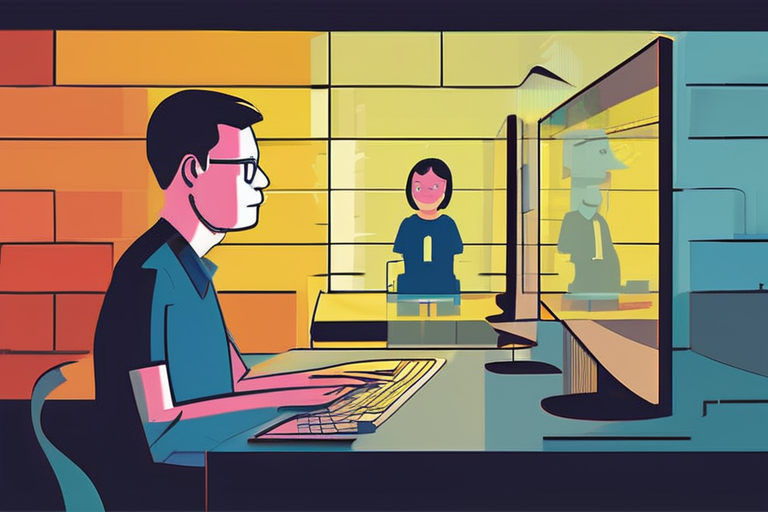Autism Spectrum Disorder: A Diagnosis in Flux
In a move that has sparked debate among medical professionals and advocates for individuals with autism, some experts are now questioning the decision to merge Asperger's syndrome into the broader diagnosis of Autism Spectrum Disorder (ASD) in 2013. The change, aimed at providing a more inclusive and accurate understanding of the disorder, has instead led to concerns about over-diagnosis and misdiagnosis.
According to Dr. Eric Fombonne, a psychiatrist and researcher at Oregon Health Science University, "Everything changed when we included Asperger's in the diagnosis of autism." He noted that early studies on autism rates showed that 75% of individuals with an ASD diagnosis had intellectual disabilities. However, under the new diagnostic criteria, people who are merely socially awkward or exhibit repetitive behaviors can also be diagnosed with ASD.
This broadening of the diagnosis has contributed to a significant increase in reported cases of autism, which Health Secretary Robert F. Kennedy Jr. has described as "an epidemic." He attributes this rise to theories of causality that mainstream scientists reject, including vaccines and Tylenol. However, many experts argue that the increased awareness and recognition of ASD have led to more accurate diagnoses.
Critics of the current diagnostic criteria point out that it can be difficult to distinguish between individuals who genuinely require support and those who may simply be eccentric or socially awkward. "The diagnosis has become too broad," said Dr. Fombonne. "We need to revisit the criteria and make sure we're not labeling people with a disorder they don't necessarily have."
Advocates for individuals with autism argue that the current diagnostic process can be overly reliant on subjective assessments, rather than objective measures. They also express concerns about the stigma associated with an ASD diagnosis and the potential impact on individuals' self-esteem.
In response to these concerns, some researchers are exploring alternative approaches to diagnosis, including the use of biomarkers or more nuanced assessment tools. Others advocate for a return to the previous diagnostic criteria, which they believe better captured the complexities of autism.
As the debate continues, one thing is clear: the diagnosis and treatment of ASD remain complex issues that require careful consideration and ongoing research. By examining the cultural, social, and medical factors at play, we can work towards creating a more accurate and compassionate understanding of this multifaceted disorder.
Background
Autism Spectrum Disorder was first introduced in 2013 as part of the Diagnostic and Statistical Manual of Mental Disorders (DSM-5). The change aimed to provide a more inclusive and accurate understanding of autism by merging Asperger's syndrome into the broader diagnosis. However, critics argue that this broadening has led to over-diagnosis and misdiagnosis.
Additional Perspectives
Dr. Paul Shattuck, an expert on autism research at the University of Washington, notes that "the current diagnostic criteria are not perfect, but they are a step in the right direction." He emphasizes the need for ongoing research and refinement of the diagnostic process to better capture the complexities of autism.
In contrast, advocates like Ari Ne'eman, founder of the Autistic Self Advocacy Network (ASAN), argue that "the current system is broken" and that individuals with autism should be at the forefront of decision-making about their own diagnosis and treatment. They advocate for a more nuanced understanding of autism and greater recognition of the diversity within the autism community.
Current Status
The debate over the diagnostic criteria for ASD continues, with no clear resolution in sight. Researchers are exploring alternative approaches to diagnosis, while advocates push for greater recognition and support for individuals with autism. As the discussion unfolds, one thing is certain: a more accurate and compassionate understanding of autism will require ongoing research, collaboration, and empathy.
Next Developments
As the debate continues, several studies are underway to explore the complexities of ASD diagnosis and treatment. These include investigations into the use of biomarkers, more nuanced assessment tools, and alternative approaches to diagnosis. In addition, advocacy groups like ASAN continue to push for greater recognition and support for individuals with autism.
In the meantime, experts emphasize the need for continued dialogue and collaboration among medical professionals, advocates, and individuals with autism themselves. By working together, we can create a more accurate and compassionate understanding of this multifaceted disorder.
*Reporting by Science.*



 Hoppi
Hoppi

 Hoppi
Hoppi

 Hoppi
Hoppi

 Hoppi
Hoppi
 Hoppi
Hoppi

 Hoppi
Hoppi










